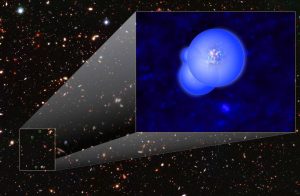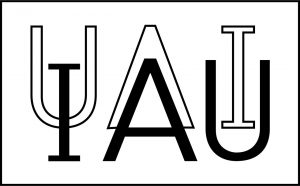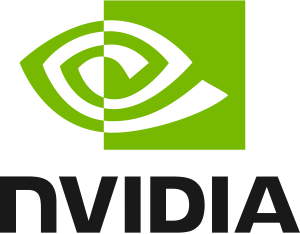 An international team of astronomers funded in part by NASA has found the farthest galaxy group identified as “EGS77“. EGS77, the trio of galaxies dates to a time when the universe was only 680 million years old, or less than 5% of its current age of 13.8 billion years. EGS77 is the farthest group of galaxies to have ever been sighted. EGS77 was discovered as part of the Cosmic Deep And Wide Narrowband (Cosmic DAWN) survey. The team of astronomers was led by an Indian-origin Goa-born scientist, Vithal Tilvi. Vithal Tilvi is currently a visiting researcher at the School of Earth & Space Exploration, at the Arizona State University, US. An international team of astronomers funded in part by NASA has found the farthest galaxy group identified as “EGS77“. EGS77, the trio of galaxies dates to a time when the universe was only 680 million years old, or less than 5% of its current age of 13.8 billion years. EGS77 is the farthest group of galaxies to have ever been sighted. EGS77 was discovered as part of the Cosmic Deep And Wide Narrowband (Cosmic DAWN) survey. The team of astronomers was led by an Indian-origin Goa-born scientist, Vithal Tilvi. Vithal Tilvi is currently a visiting researcher at the School of Earth & Space Exploration, at the Arizona State University, US. |
| Source: The Economic Times |
 The Council of Scientific and Industrial Research (CSIR) and National Physical Laboratory (NPL) developed an ink to combat the problem of fake printing of passports and counterfeiting of currency notes. The ink has a new security feature o protecting itself against duplicity The Council of Scientific and Industrial Research (CSIR) and National Physical Laboratory (NPL) developed an ink to combat the problem of fake printing of passports and counterfeiting of currency notes. The ink has a new security feature o protecting itself against duplicity |
| Key facts of the discovery The ink was produced based on single excitable dual emissive luminescent pigment. It was developed based on the concept of fluorescence and phosphorescence phenomena. Currently, the currency notes display only one color with the emission of wavelength. However, in the ink developed by the scientists features changes in pigment color after the notes are printed. In ambient light the ink shows white color. When the ink is exposed to UV light, it turns red and when the UV source is switched OFF it turns green. |
| Why the new ink? According to the annual report of RBI (2018-19), the risk of duplication of Rs 500 and Rs 2000 notes are higher. The report says that recently launched 500 rupees notes are accounted to 121% of duplication and Rs 2000 notes are accounted to 21.9% duplication. |
| Fluorescence and Phosphorescence Both in phosphorescence and fluorescence the radiation is electromagnetic and is spontaneous. In case of fluorescence, the radiation stops after the source is switched off. On the other hand, in phosphorescence, the glow continues for few hours. |
 The World Health Organization (WHO) announced that for the 1st time it had approved a “biosimilar” medicine of Trastuzumab named “Ontruzant” to make cheaper breast cancer treatment at an affordable rate to women globally. The medicine is derived from living sources rather than chemicals. The biosimilar medicine of the Trastuzumab drug was supplied by Samsung Bioepis co Ltd. The World Health Organization (WHO) announced that for the 1st time it had approved a “biosimilar” medicine of Trastuzumab named “Ontruzant” to make cheaper breast cancer treatment at an affordable rate to women globally. The medicine is derived from living sources rather than chemicals. The biosimilar medicine of the Trastuzumab drug was supplied by Samsung Bioepis co Ltd. |
| Source: The WHO |
 Ethiopia launched its first satellite, ‘Ethiopian Remote Sensing Satellite’ (ETRSS) from China. ERSS is a remote-sensing microsatellite, that was launched in order to help African country’s research into climate change. It was sent into space together with 8 other satellites by a Long March-4B carrier rocket from Taiyuan Satellite Launch Center (TSLC) in Shanxi Province of north China. Ethiopia launched its first satellite, ‘Ethiopian Remote Sensing Satellite’ (ETRSS) from China. ERSS is a remote-sensing microsatellite, that was launched in order to help African country’s research into climate change. It was sent into space together with 8 other satellites by a Long March-4B carrier rocket from Taiyuan Satellite Launch Center (TSLC) in Shanxi Province of north China. |
| About Ethiopian Remote Sensing Satellite (ETRSS) This wide-range multispectral remote-sensing microsatellite weighs about 65 kg and has a design life of 2 years. It can obtain remote-sensing data for agriculture, forestry, water conservation, as well as disaster prevention and mitigation. The satellite was donated to Ethiopia by China and this microsatellite program has helped establish strong collaboration between Ethiopia and China. The satellite was designed by Chinese and Ethiopian engineers and Chinese government paid about $6m of more than $7m manufacturing costs. |
|
 The International Astronomical Union (IAU) announced the names of the newly discovered stars and planets, where the name “Sharjah” was chosen for a star with “Barjeel” being the name of one of its planets. The International Astronomical Union (IAU) announced the names of the newly discovered stars and planets, where the name “Sharjah” was chosen for a star with “Barjeel” being the name of one of its planets. |
| Source: The News on AIR |
 The National Aeronautics and Space Administration (NASA) will launch rover ‘Mars 2020’ in 2020. The rover has been build and managed by NASA’s Jet Propulsion Laboratory in Pasadena, California. “Mars 2020” will explore a landscape shaped by water which is the ‘Jezero Crater’, the site of an ancient delta. ‘Mars 2020’s arm has the same reach as ‘Curiosity’s arm. ‘Mars 2020’s’ turret weighs 99 pounds (45 kilograms) more than Curiosity’s because it carries larger instruments and a larger drill for coring and have many other changes in the physical design. The National Aeronautics and Space Administration (NASA) will launch rover ‘Mars 2020’ in 2020. The rover has been build and managed by NASA’s Jet Propulsion Laboratory in Pasadena, California. “Mars 2020” will explore a landscape shaped by water which is the ‘Jezero Crater’, the site of an ancient delta. ‘Mars 2020’s arm has the same reach as ‘Curiosity’s arm. ‘Mars 2020’s’ turret weighs 99 pounds (45 kilograms) more than Curiosity’s because it carries larger instruments and a larger drill for coring and have many other changes in the physical design. |
| Source: The Times Of India |
 The Indian Space Research Organization is gearing to launch RISAT-2BR1 from Satish Dhawan Space Centre in Sriharikota on December 11, 2019. It is the second satellite in the RISAT series. The first satellite RISAT-2B was launched earlier this year. The Indian Space Research Organization is gearing to launch RISAT-2BR1 from Satish Dhawan Space Centre in Sriharikota on December 11, 2019. It is the second satellite in the RISAT series. The first satellite RISAT-2B was launched earlier this year. |
|
 ISRO has transferred its indigenous technology to produce space-grade Li-Ion cells to Bharat Heavy Electricals Limited (BHEL). In March 2018, BHEL signed the Technology Transfer Agreement with ISRO for acquiring the Li-Ion Cell production technology. This production facility is primarily targeting to meet Li-Ion Cell requirements for ISRO and other strategic sectors. BHEL can also produce and sell Li-Ion cells for meeting other national/commercial applications by suitably modifying the space-grade cell which can lead to cost reduction. BHEL is in the process of establishing the Li-Ion production facility near Bangalore in Karnataka. ISRO has transferred its indigenous technology to produce space-grade Li-Ion cells to Bharat Heavy Electricals Limited (BHEL). In March 2018, BHEL signed the Technology Transfer Agreement with ISRO for acquiring the Li-Ion Cell production technology. This production facility is primarily targeting to meet Li-Ion Cell requirements for ISRO and other strategic sectors. BHEL can also produce and sell Li-Ion cells for meeting other national/commercial applications by suitably modifying the space-grade cell which can lead to cost reduction. BHEL is in the process of establishing the Li-Ion production facility near Bangalore in Karnataka. |
| Source: The Press Information Bureau |
 Microsoft rolled out its K12 Education Transformation Framework more widely to schools across India at the second edition of the Microsoft Education Days in Gurgaon. Microsoft Education Days 2019 brought together more than 700 school leaders, educators, students and Microsoft partners to deliberate on the future of learning. It featured sessions moderated by Microsoft leaders and Microsoft Innovative Educator (MIE) Experts on using technologies like AI, Teams, Minecraft and Flipgrid to collaborate and create unique learning experiences. Teachers and students from schools across India also demonstrated the innovative ways in which they are digitally transforming education by bringing in AI, gamification, personalization and simplifying STEM (science, technology, engineering, mathematics) learning for students. Microsoft rolled out its K12 Education Transformation Framework more widely to schools across India at the second edition of the Microsoft Education Days in Gurgaon. Microsoft Education Days 2019 brought together more than 700 school leaders, educators, students and Microsoft partners to deliberate on the future of learning. It featured sessions moderated by Microsoft leaders and Microsoft Innovative Educator (MIE) Experts on using technologies like AI, Teams, Minecraft and Flipgrid to collaborate and create unique learning experiences. Teachers and students from schools across India also demonstrated the innovative ways in which they are digitally transforming education by bringing in AI, gamification, personalization and simplifying STEM (science, technology, engineering, mathematics) learning for students. |
| Source: The Microsoft Officials |
 NVIDIA has announced a new kind of GPU-accelerated supercomputer in the cloud on Microsoft Azure. NDv2 supercomputer is designed to handle demanding AI and high-performance computing applications, using up to 800 NVIDIA V100 Tensor Core GPUs interconnected on a single. Mellanox InfiniBand backend network, making it the world’s largest GPU-accelerated cloud-based supercomputer. It enables customers to rent an AI supercomputer on-demand from their desk, and match the capabilities of large-scale on-premises supercomputers. NVIDIA has announced a new kind of GPU-accelerated supercomputer in the cloud on Microsoft Azure. NDv2 supercomputer is designed to handle demanding AI and high-performance computing applications, using up to 800 NVIDIA V100 Tensor Core GPUs interconnected on a single. Mellanox InfiniBand backend network, making it the world’s largest GPU-accelerated cloud-based supercomputer. It enables customers to rent an AI supercomputer on-demand from their desk, and match the capabilities of large-scale on-premises supercomputers. |
| Source: The Business Standard |
You need to login to perform this action.
You will be redirected in
3 sec
